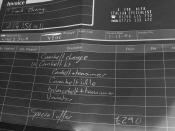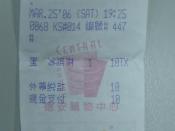Internal Controls.
An internal control system is a toolbox containing policies, procedures, checks, and balances aimed at ensuring the integrity of a company's transactions, assets, and reporting. These controls may consist of both financial and non-financial controls. Senior management or the board of directors usually bares the responsibility of designing and implementing internal controls. Once established, the internal control system provides structure that safeguards the company's assets, while ensuring that company records are complete and accurate. These measures also assist the company in operating effectively within the boundaries of the law. An internal control system is important for a company in order to prevent it from falling victim to fraud or material loses.
Jamona.com uses the following internal controls when receiving an invoice for payment. The Office Manager receives the invoice in the mail, then routes the invoice to the Accounts Payable department. When the invoice arrives at the Accounts Payable department, the following steps occur: the clerk reviews the invoice, codes for the proper expense account, enters the account payable into the accounting system, prints the check, signs the check, mails check to vendor, and finally files the invoice.
Additionally, Jomona.com uses the following internal controls when receiving bank statements. The Office Manager receives the bank statement along with the canceled checks, accounts for the numerical sequence of checks matches, files the checks in numerical sequence, and routes the bank statement to the Accounts Payable department. The Accounts Payable department reconciles the bank statement.
Preparing bank statement reconciliation of all bank accounts upon receipt of the bank statement is a form of detective control. Bank statement reconciliation is done to ensure that the balance shown in the cashbook at the end of a given accounting period is correct by comparing it with the bank statement supplied by the...


